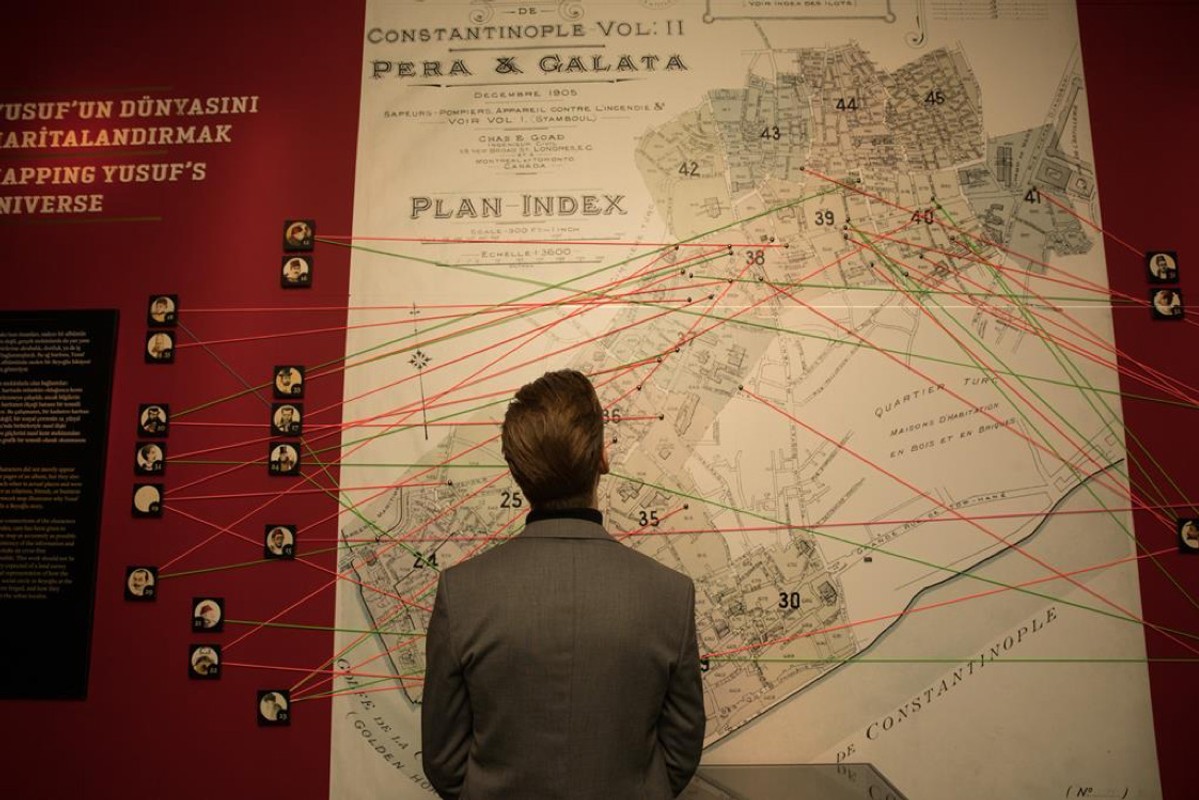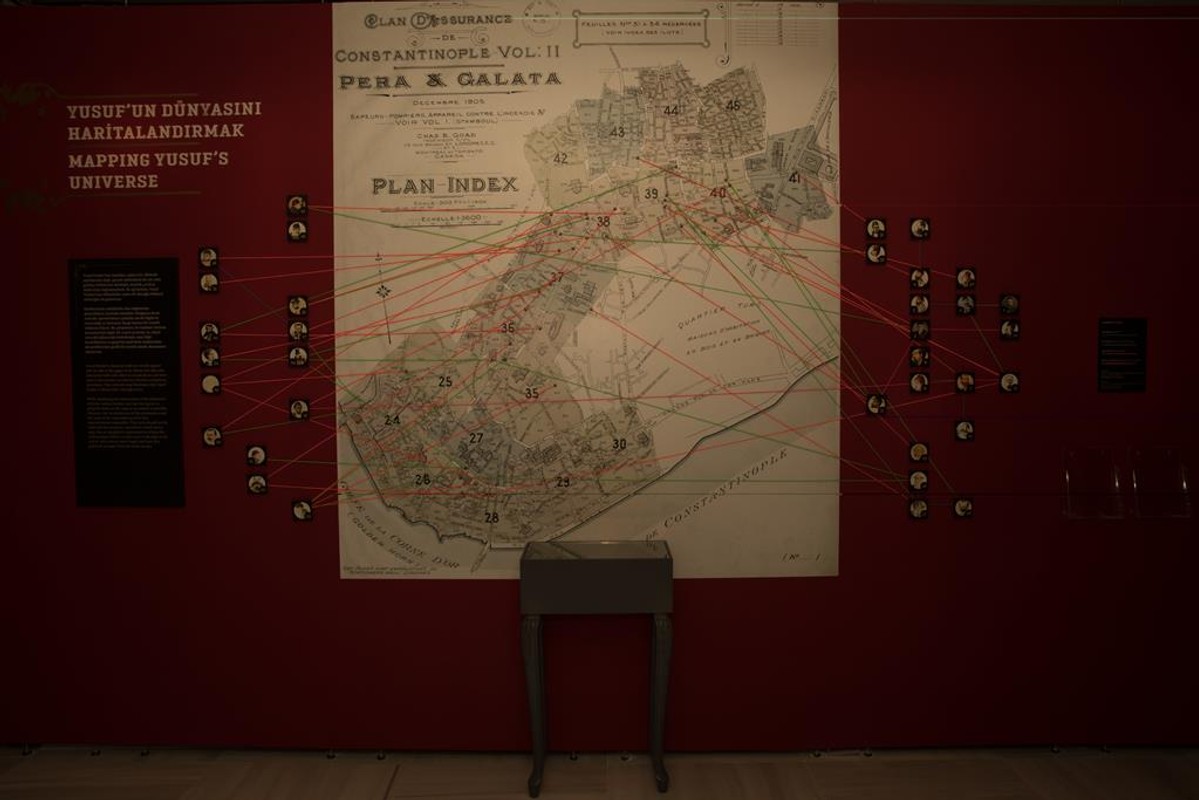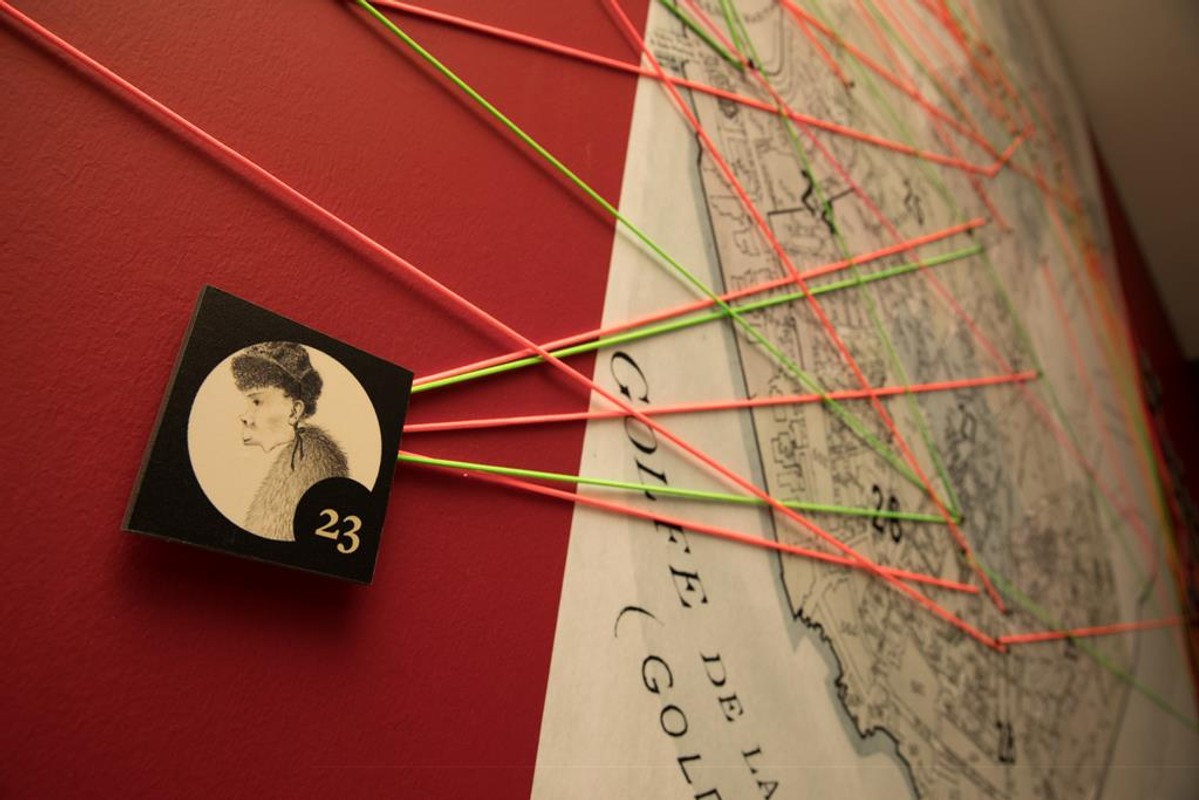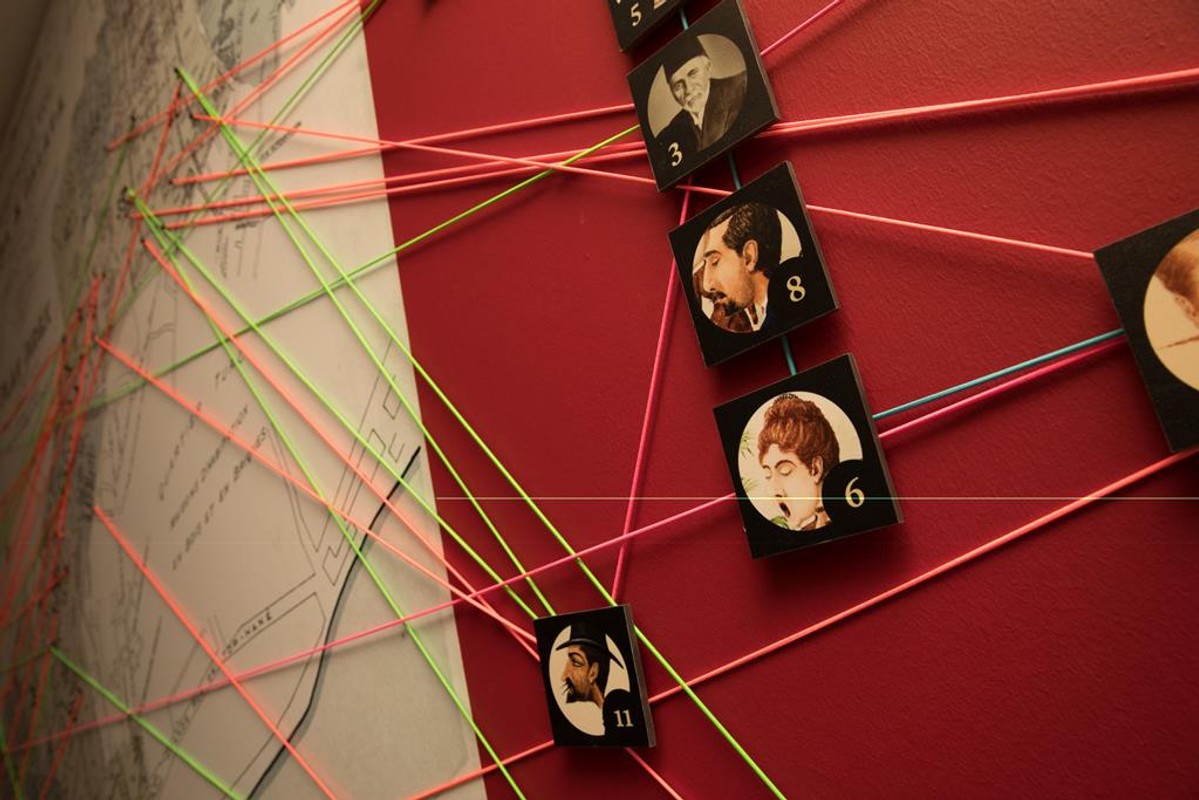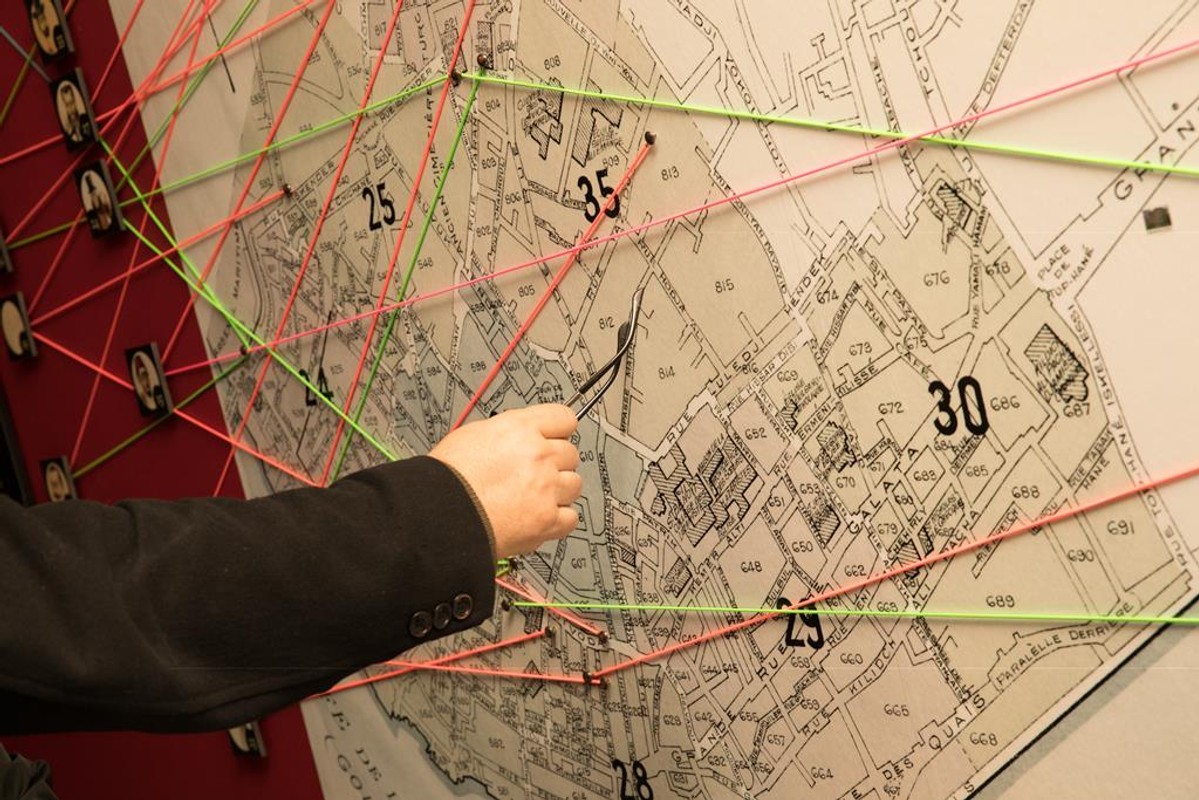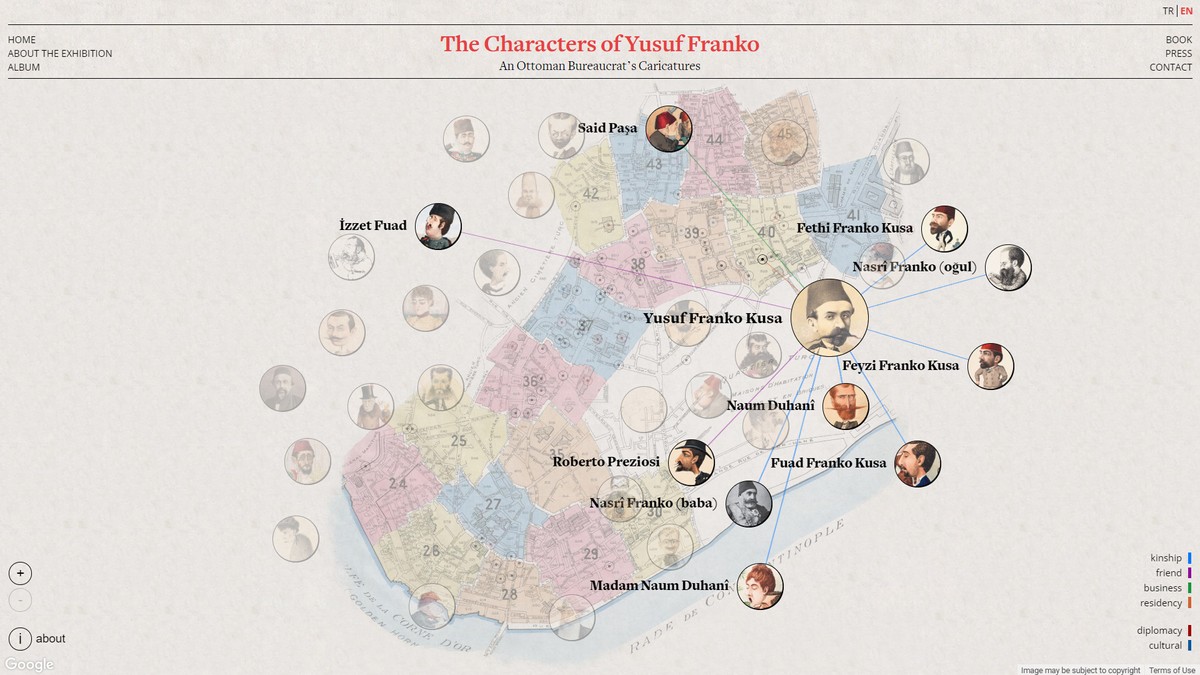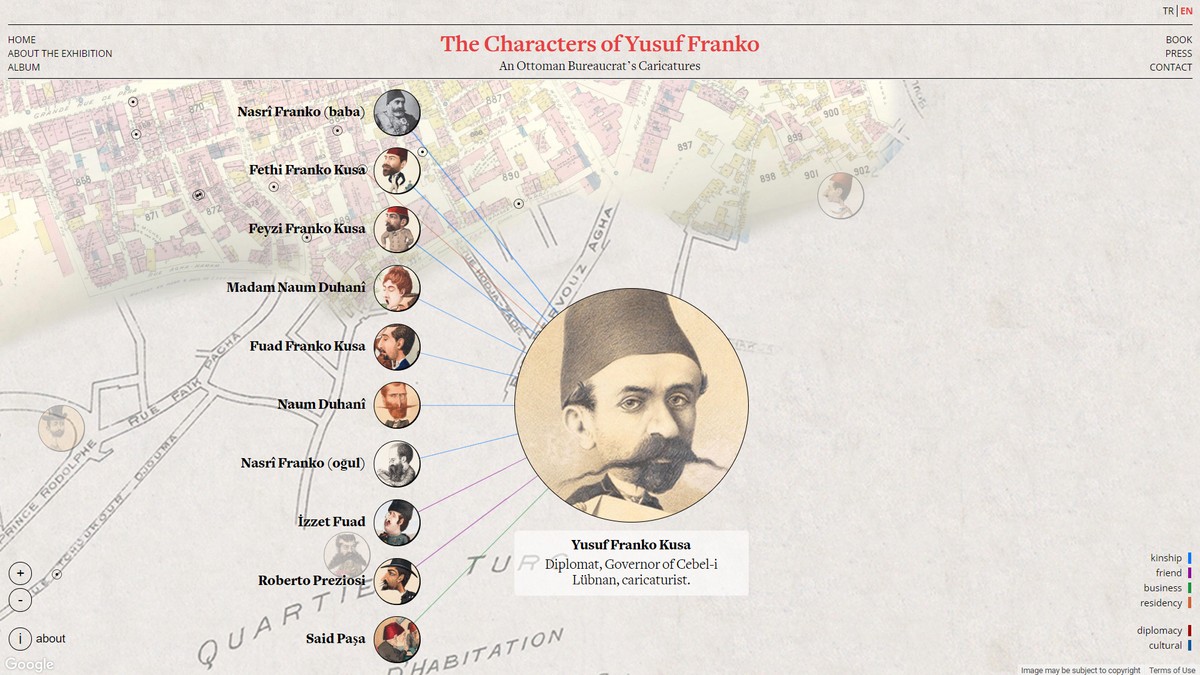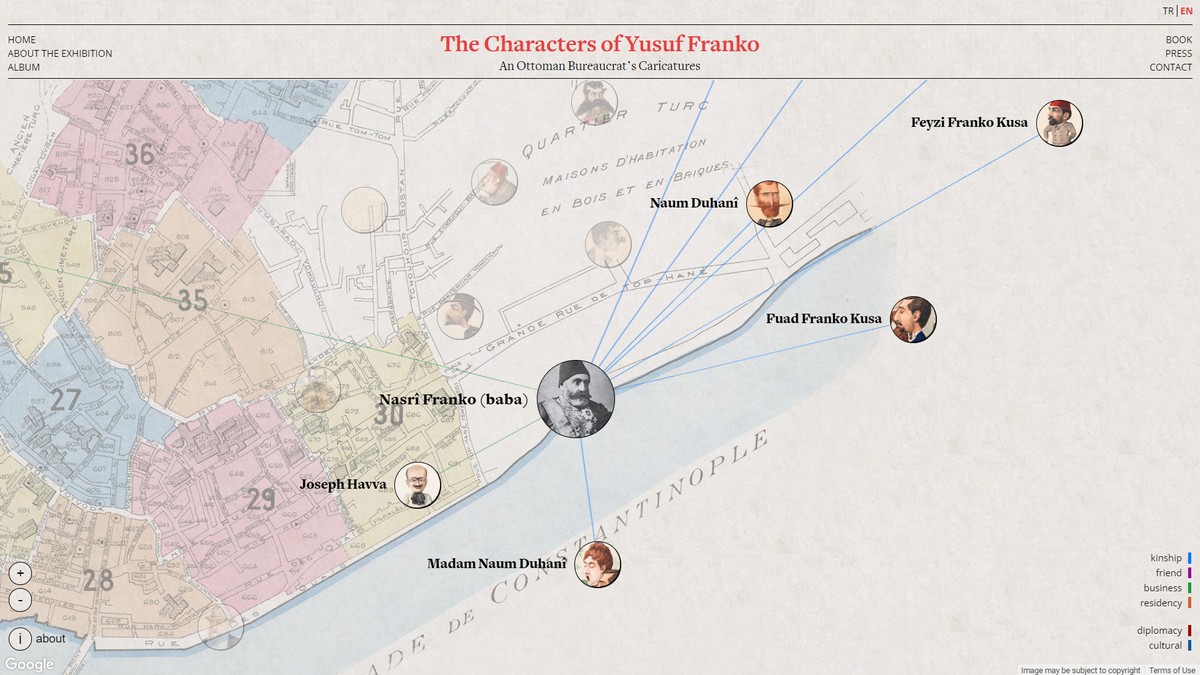The Characters of Yusuf Franko: An Ottoman Bureaucrat's Caricatures
Kakare Interactive, 2017
?Mapping Yusuf?s Universe? is a digital mapping project of the elite networks in late Ottoman Pera, the ?European,? and ?cosmopolitan? district of Istanbul, connecting spatial and network layers that bring to fore the relations of power that constituted the elite social world of late nineteenth century Ottoman cosmopolitanism.
Mapping Yusuf?s Universe is part of tripartite research project, The Characters of Yusuf Franko: An Ottoman Bureaucrat?s Caricatures, composed of a physical exhibition organized at Koç University?s Research Center for Anatolian Civilizations, a scholarly book and an online exhibition.
This project takes an unpublished caricature album from this period as its vantage point: Yusuf Franko Kusa (1853 ? 1933), a venerated Ottoman bureaucrat, had left a secret, unpublished manuscript album, titled Types et Charges, in which he collected 120 caricatures, dated from 1884 to 1896, of the members of his own social world ? imperial bureaucrats, European diplomats, the wealthy members of the elite society, the mesdames and the monsieurs, the beys and the efendis. Using these caricaturized portraits of these ?types? of the period as a gateway to this world, this project maps the way in which elite social networks were founded through material links in the urban space, and represented in Yusuf Franko?s caricatures.
The base map of the visualization is the index plate Charles E. Goad?s 1905 cadastral map of Istanbul?s Pera district (https://www.archives.saltresearch.org/R/-?func=dbin-jump-full&object_id=458311&silo_library=GEN01). The digital visualization is inspired by the namesake section at the physical exhibition. For this section, the base map was painted on a wall within the ANAMED Gallery (please see the photographs uploaded in the media section of the application form). It was surrounded by the thumbnails of the characters of Yusuf Franko, which were matched with specific places on the map according to residential or occupational links, represented by strings of various colors. These characters were interconnected as well through kinship, friendship, business, and patronage links. The visitors are presented a legend of the colours so that they are invited to read a multi-layered map in the venue. There was also a hard-copy textual legend in the gallery in which the characters are introduced in detail.
Due to the nature of this mapping, a lot of historical data unearthed during the research was omitted for the physical display in order to make it more accessible for the visitor of the gallery, who would spend very limited time in front of this particular section of the exhibition. This limitation of the physical display gave birth to the idea of having a much more detailed and accessible digital version that would also create a more permanent record and database for future research.
Working together with Kakare Interactive, the map was moved to the digital platform, where visitors could explore in detail how the members of Pera's elite advanced their power through the connections they developed and the urban spaces they invested in. This digital version allowed us to include a greater number of interpersonal and spatial connections. Thanks to the interface prepared for this digital platform, two important features could also be added to the mapping. First, rather than being limited to the index plate, the interface integrates the index plate with the actual plates, displayed to the user as they zoom in or out. This allows a much more accurate and detailed demonstration of the spatial relations of Pera's elites. Second, all characters are featured with their short biographical information, giving a richer experience to the visitor, and creating an archive that would be available for other researchers.
All in all, this permanent website hosted by the Koç University helps urban researchers learn from the past and understand the present-day cosmopolitan Pera district of Istanbul.
Who is Yusuf Franko? What is so special about him?
Yusuf Franko Kusa was a late 19th-century Ottoman bureaucrat, a Minister of Foreign Affairs, a governor general, and a man of society, as well as an avid caricaturist. The exhibition and hence the website revolves around Yusuf Franko Kusa Bey?s unique caricature album. Yusuf Franko?s album, compiled between the years 1884 and 1896, was on display for the first time at the exhibitions. The visitors met satirically charged portraits of wealthy capitalists, members of high society, Ottoman pashas, Levantines, artists, and diplomats of the late 19th century. The caricatures offer the visitors the opportunity to take note of the colorful social networks to which Yusuf Franko belonged, especially those of the Beyo?lu-Pera quarter, as well as the global locales of Istanbul. By following the caricatures, their real-life counterparts, and the places they frequented, the exhibition and its digital version emphasize how the Galata-Beyo?lu axis became a financial and diplomatic center as well as a destination of international culture and arts. They also touch on significant places of the period, such as the Naum Theater. In part, the exhibition also serves as a reminder of those locales, which no longer exist and did not find their way onto the album.
Links
Authors
Project Partner
Koç University Research Center for Anatolian Civilizations (ANAMED) Istanbul, Turkey https://anamed.ku.edu.tr/en/node



